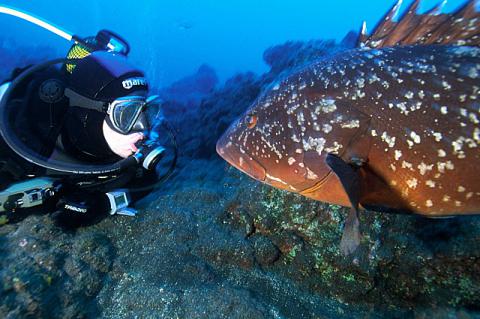X-Ray Mag #11
Patagonia, Argentina. El Hierro, the Canary Islands, Coral Bleaching and Global Warming. Crossing the Atlantic on a research vessel. The Conveyor Belt, the oceans global circulation. Building reefs on the Maldives. Cosmetics for Divers. Leigh Cunningham: The Wake-up call. Travelling with Camera Equipment. Japanese wrecks off Palau. Portfolio: Patrick Chevalier.
Main features in this issue include:
Coral Bleaching
Can tropical stony corals adapt to bleaching?
But what is coral bleaching actually? No, it is not mum that has stinted bleach over the lovely colourful tropical corals….although it looks like it. The explanation is quite different. Normally, tropical shallow-water stony corals only exist to dept’s where sunlight is able to reach.
Crossing the Altantic
“The subject of oceanology is the study and research of the totality of events taking place in oceans, seas and lakes,” wrote geographer, academician and founder of Russian oceanology, Juli Shokalskiy, in 1917. Oceanology, or oceanography1 as it is more commonly called in the West, is an integral part of natural sciences. The ratio of water to land on the planet Earth is approximately 71 to 29 percent.
By this point in history, nobody had yet taken the responsibility of determining the validity of oceanography as a science.
El Hierro
In Columbus’ time, El Hierro was considered the limit of the known world in Europe. For over 1700 years, the smallest island of the Canaries was the land of the Zero Longitude and the ocean beyond was the realm of the unknown. Today, a lighthouse at the Western end of this enigmatic island marks the meridian site. Hierro’s claim to fame does not end here. It is a beautiful and wild island of many contrasts.
Dives have that special flavour that result from the meeting of Atlantic species with subtropical ones. Having dived in the rest of Canaries, I am struck by the diversity of the fish life around Hierro. It surpasses anything I have seen in the Canaries.
Ghost ships of Palau
Hidden beneath the serene waters of Palau’s lagoon lie dozens of coral encrusted Japanese ships. These long lost hulks were all sent to their final resting places during a devastating American air strike over 59 years ago and have since gained notoriety as some of the world’s most alluring ghost-filled vessels.
Ocean conveyor belt - the thermohaline circulation
Can global warming trigger a shutdown or slowdown the circulation in the world’s oceans?
The globe is encircled by a pattern of ocean currents known as the ocean conveyor belt. Heat is transported from the equator towards the poles by both the atmosphere and by ocean currents, with warm water near the surface and cold water at deeper levels. As such, the state of the circulation has a large impact on the climate of our planet.
The thermohaline circulation is the term for the global density-driven circulation of the oceans. Term is derived from thermo (heat) and haline (salt), which together determine the density of sea water.
Patagonia
Consider a windy place — I mean, very windy — so windy you must ask the wind about what you can do today. Consider the wind as “mobile” as the “Donna” of the opera. He changes his mood at any time with no warning. Mood, in terms of wind, is direction, force, temperature, humidity and all the weather changes that come with them.
Patagonia is a region so vast that it would take more than one article to describe it. So, that is what we are going to do. First of all, and from our point of view (scuba divers and underwater photographers), there is a marine coastal region and there is a river and lakes region.
Patrick Chevailler
Patrick Chevailler was born in Bordeaux, France, in July 1946. All during his teen age years, he admired the paintings his father created as a hobby, thinking he would never be able to paint like his father did. Chevailler received a diploma as a medical doctor in 1972 and settled in the countryside of southwestern France as a general practitioner. Since his childhood, Chevailler always enjoyed sailing.
A few years later, Chevailler’s father painted a miniature oil painting of two old fighting frigates as a gift to decorate his son’s boat, and Chevailler kept asking his father to paint another one in order to have a pair. But his father was a busy man, and the painting was never made.
The Wake UP call
A long time ago, I sat in hoosha (Bedouin tent) after a deep air dive in the Blue Hole (Dahab, South Sinai, Red Sea). My good friend and dive buddy had less than an hour ago peeled me of the wall near the bottom of the Blue Hole. I had succumbed to deep water blackout, caused by a high degree of stupidity, wrong kit and inadequate training.
60 meter dives offered
Travelling with camera equipment
In issue #9 we took you through some tips of the trade for selecting a dive operator that will help you properly facilitate your underwater photography. In this issue we’d like to share with you some hints and tips for getting all of your valuable camera equipment to your destination safely, and without incurring costly excess baggage fares.
Checking your camera gear into the hold is often undesirable; baggage handlers are nicknamed ‘throwers’ for a reason; and the last thing you want to happen is your camera gear to arrive damaged, stopping you from shooting.










